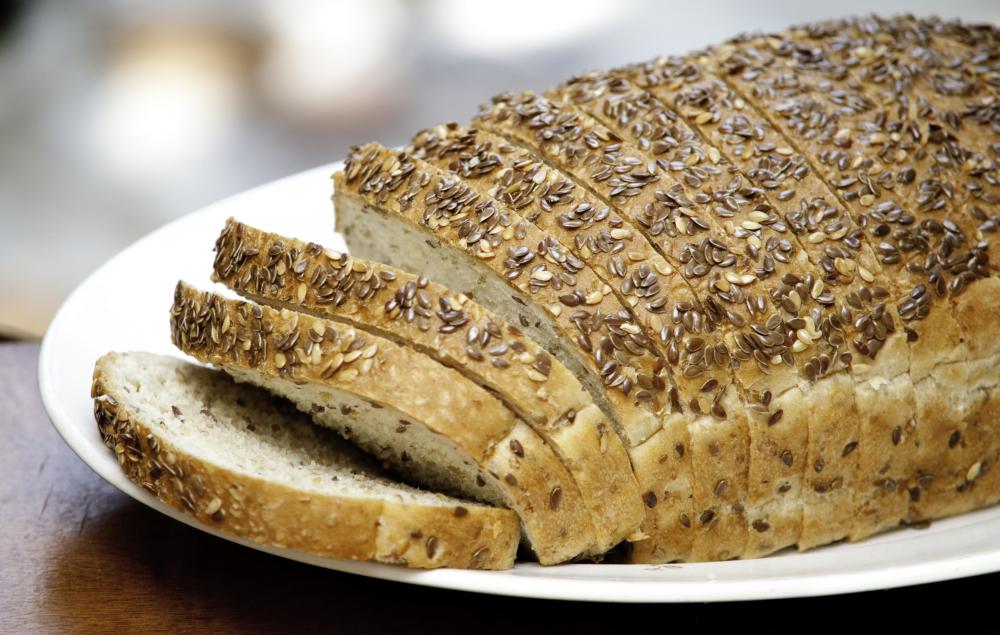At WiseGEEK, we're committed to delivering accurate, trustworthy information. Our expert-authored content is rigorously fact-checked and sourced from credible authorities. Discover how we uphold the highest standards in providing you with reliable knowledge.
What are the Different Types of Malnutrition Diseases?
Malnutrition can mean any diet that is out of balance, but usually refers to a condition that comes from either a diet that is inadequate in one or more ways or a person’s inability to absorb or metabolize the nutrients that are provided by the balanced and healthy diet that they do it. Malnutrition diseases are the specific diseases that result from the lack of various dietary elements, such as protein, vitamins, or minerals. Malnutrition diseases include kwashiorkor, beriberi, rickets, pellagra, and scurvy. Malnutrition can also cause other problems that are not diseases, some of the worst of which are mental retardation and death.
Kwashiorkor is one of the malnutrition diseases. It results from a serious protein deficiency. Kwashiorkor is common in youngsters in cultures in which children are weaned onto a diet that mainly consists of starchy foods, such as the sweet potatoes, grains, cassava, and plantain diet of tropical or subtropical regions. It can have non-dietary causes as well. Kwashiorkor can be treated by adding supplemental protein to the diet, for example, with non-fat dried milk powder.

Beriberi is one of the malnutrition diseases caused by a vitamin deficiency, in this case, an insufficiency of thiamine, also known as vitamin B1. The name, which means “I can’t; I can’t” in Singhalese, is an expression of the crippling effects of the disease: beriberi affects the muscles, circulatory system, nerves, and digestive system. It took some detective work to figure out the source of the disease, which affected a mainly Asian population. It turned out that Asians who preferred white rice, in removing the rice bran that covered it, were removing the potential source of thiamine in their diets.

Rickets is another malnutrition disease caused by a vitamin deficiency, in this case, a lack of vitamin D, although a lack of calcium can also be an involved. It results in insufficient calcium being deposited in the bones and teeth, so that they may become stunted or curved. It can be addressed by increased sunlight and vitamin D supplementation, which is often added to milk.

Pellagra is a vitamin deficiency disease caused by a lack of niacin, also called nicotinic acid. Pellagra is associated with a corn-centered diet. Mild cases may respond to a readjustment of the diet with the addition of food rich in B vitamins, such as whole grain breads and cereals, legumes, liver, yeast, fish, and meat.
Scurvy is the disease caused by an insufficient amount of vitamin C, or ascorbic acid, in the diet. At one time, scurvy was a typical disease for sailors because they went for long periods of time without fresh vegetables and fruit. Citrus fruit is particularly high in vitamin C, as are green leafy vegetables. The nickname limey for British sailors came about from the use of limes and lime juice on British ships as a scurvy preventative.
AS FEATURED ON:
AS FEATURED ON:

















Discussion Comments
@irontoenail - To some extent that is true, but you aren't acknowledging that there are a lot of people in the world who simply cannot get enough calories. Never mind wanting to get a diverse range of different foods, they simply want to be able to eat enough to keep their hearts beating for another 24 hours.
Many of the diseases of malnutrition are caused by ignorance or even by greed (for example, there have been companies that falsely reported that their milk formulas were nutritionally complete for infants when it was true) but a whole lot of it is caused by simple hunger and poverty.
@pleonasm - Well, one of the classic examples of that is preventing scurvy. They actually knew that citrus would prevent it for a while, and then somehow forgot that information.
Another example is goiters caused by iodine deficiency. The only reason people in more developed countries don't have this deficiency today is that iodine is added to salt, so if you eat anything that has any salt added to it, you'll be getting some iodine (you can also get it from seafood).
It's a simple, low-cost solution for a problem that only exists because in the modern world we don't eat whatever it was our ancestors ate in order to get enough iodine. The causes of malnutrition these days are almost always because of modern pressures, whether that's from environmental degradation that has exhausted soils of the nutrients we need, or from people who end up on a monotonous diet because they can't afford to eat a variety of foods (or because they end up eating five hundred variations of processed corn syrup).
The example of beriberi is one of the many examples of what happens when a culture quickly adopts some of the norms of another country without the same levels of education and understanding of those norms.
Why would they suspect that eating white rice would be a problem, when it is done so widely elsewhere? Of course, when it is done elsewhere it's probably accompanied by some other ingredient that we all take for granted which provides the nutrient. I suspect a lot of diseases from malnutrition are actually preventable with what is on hand or with other simple solutions, but people just don't know it.
Post your comments